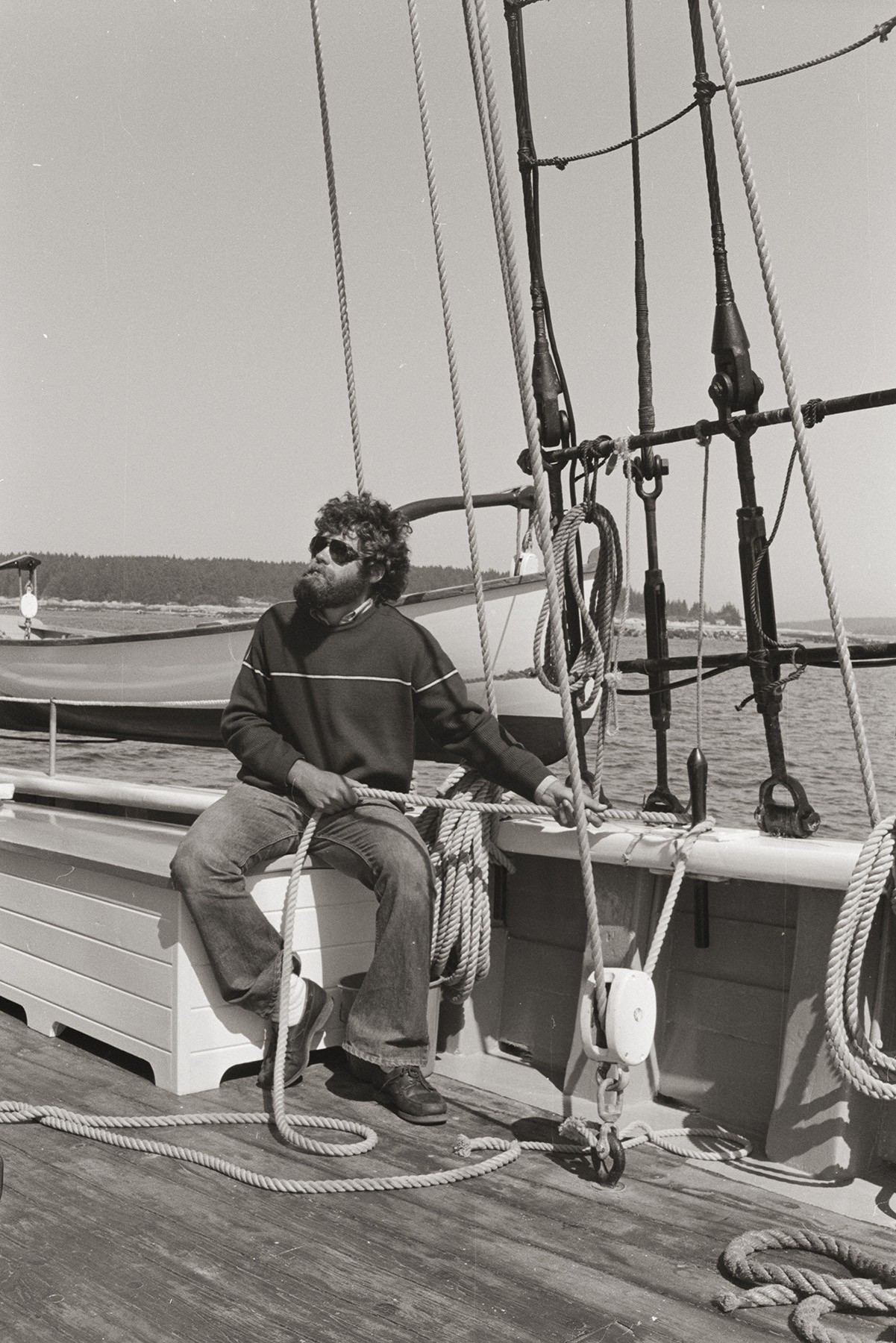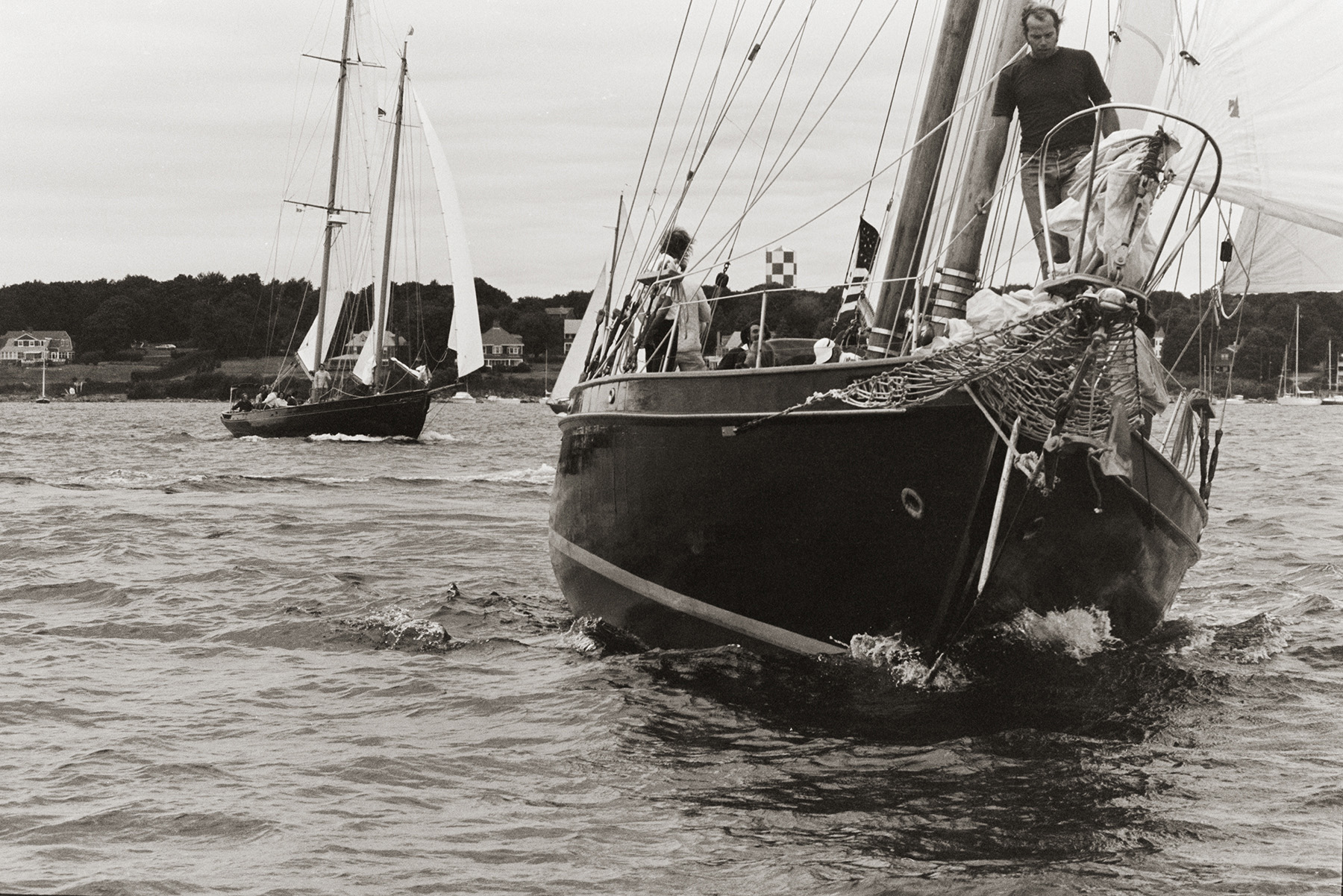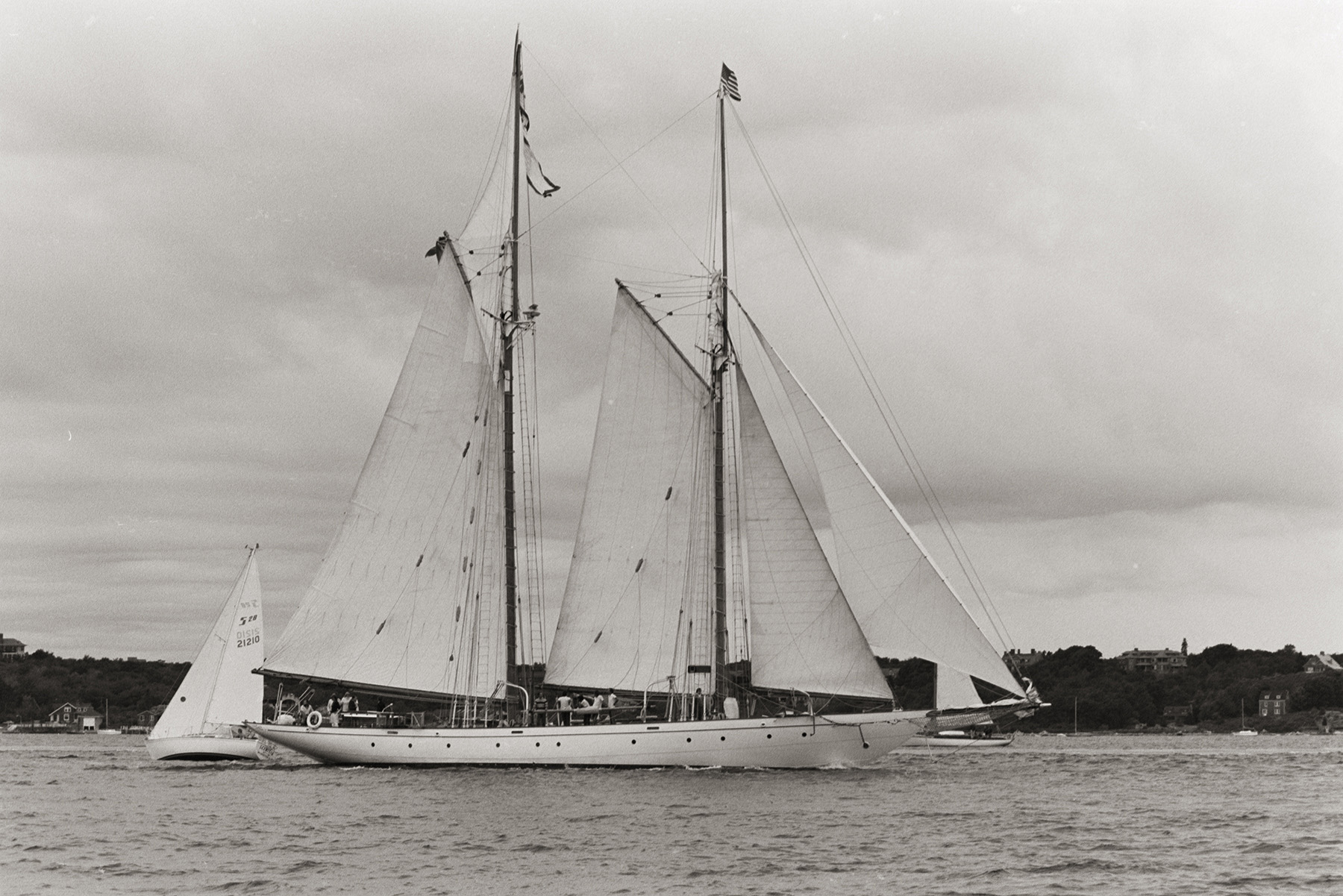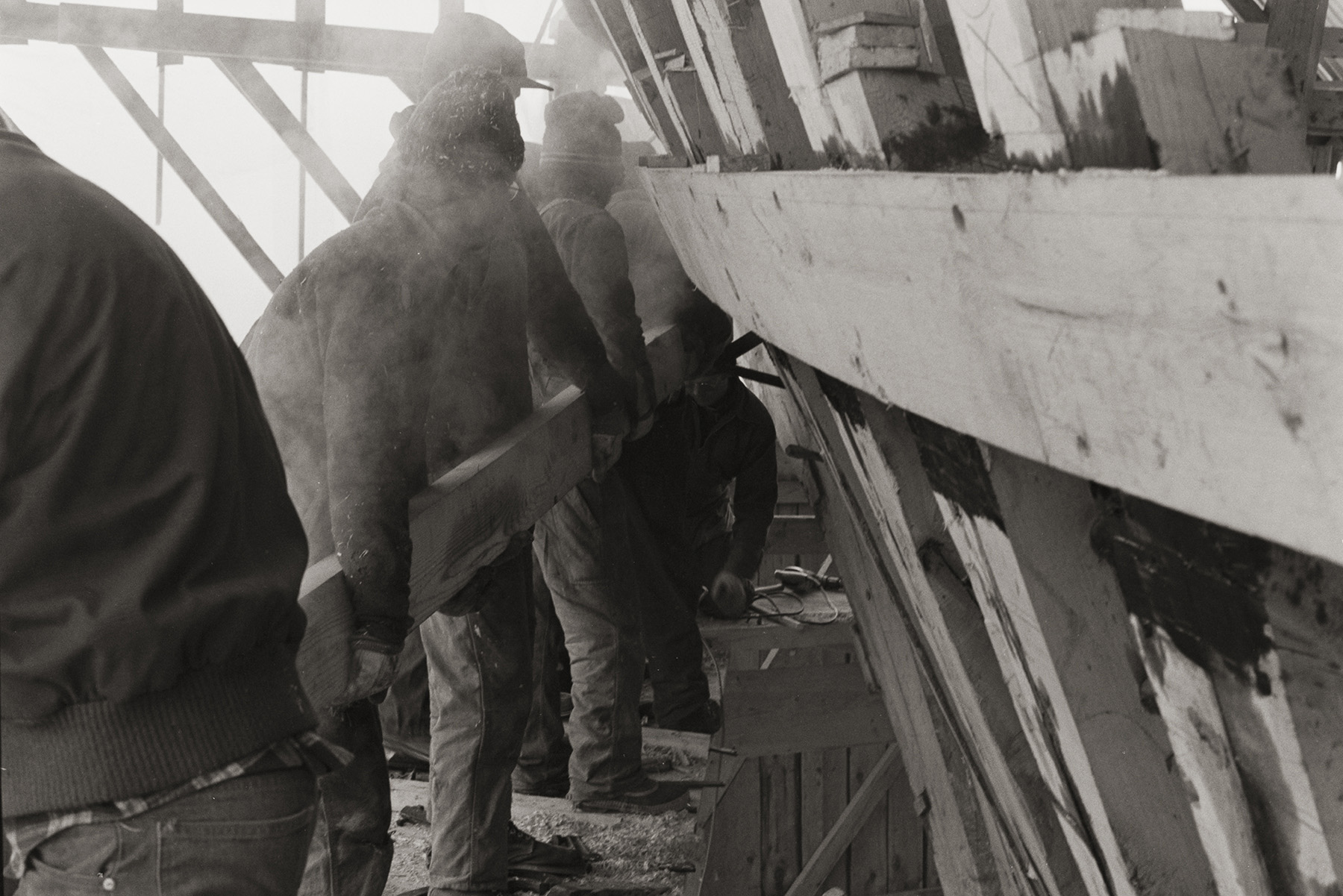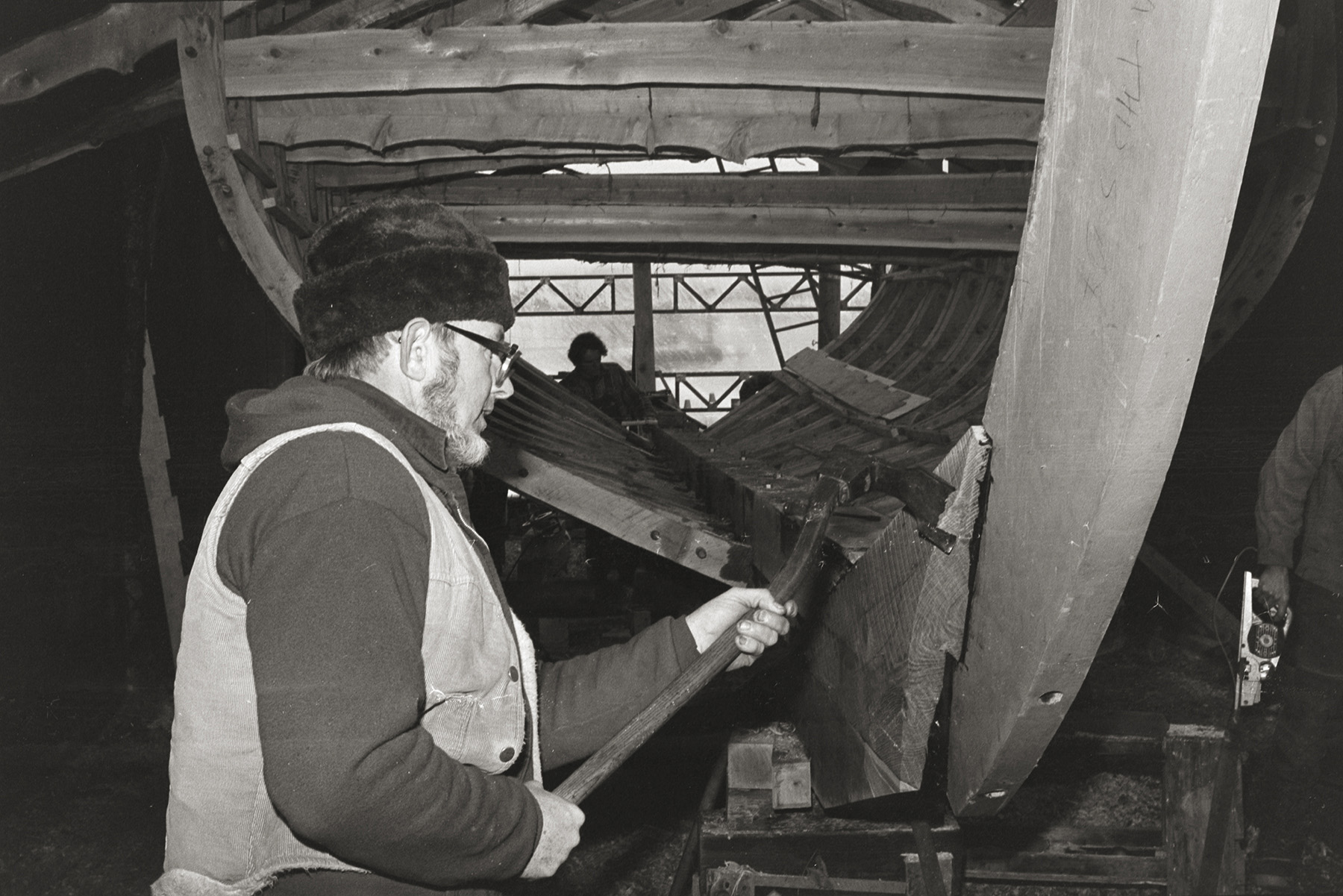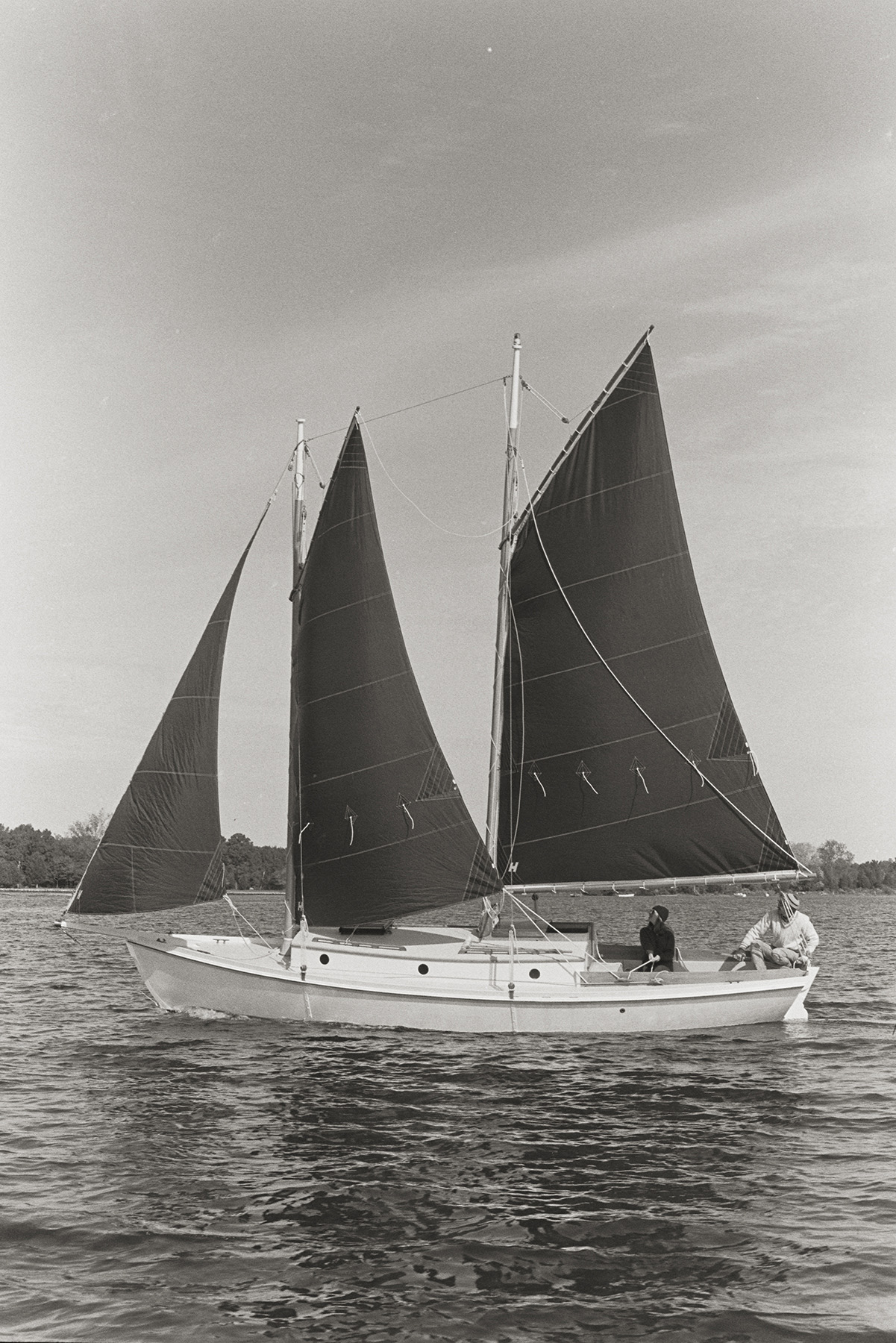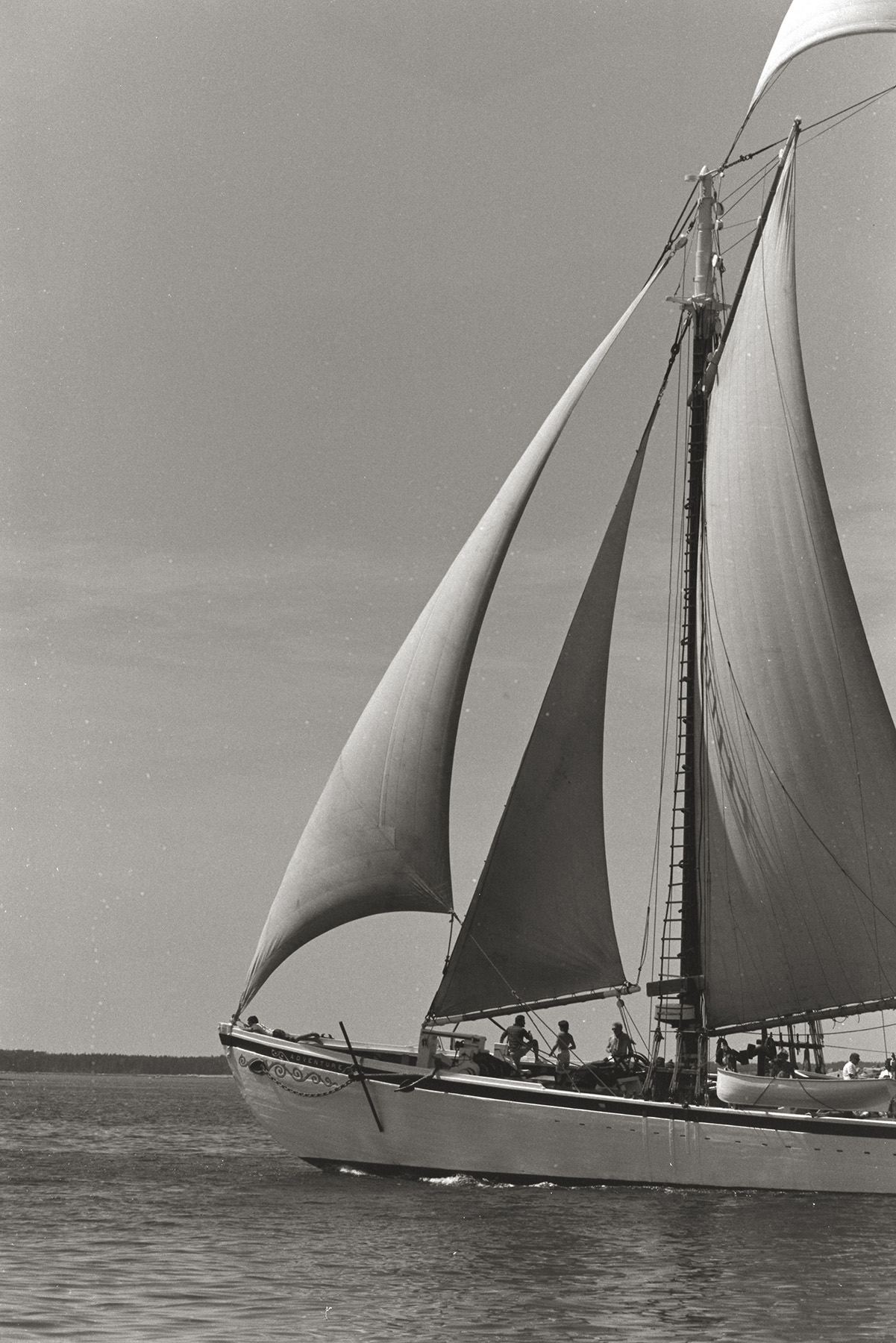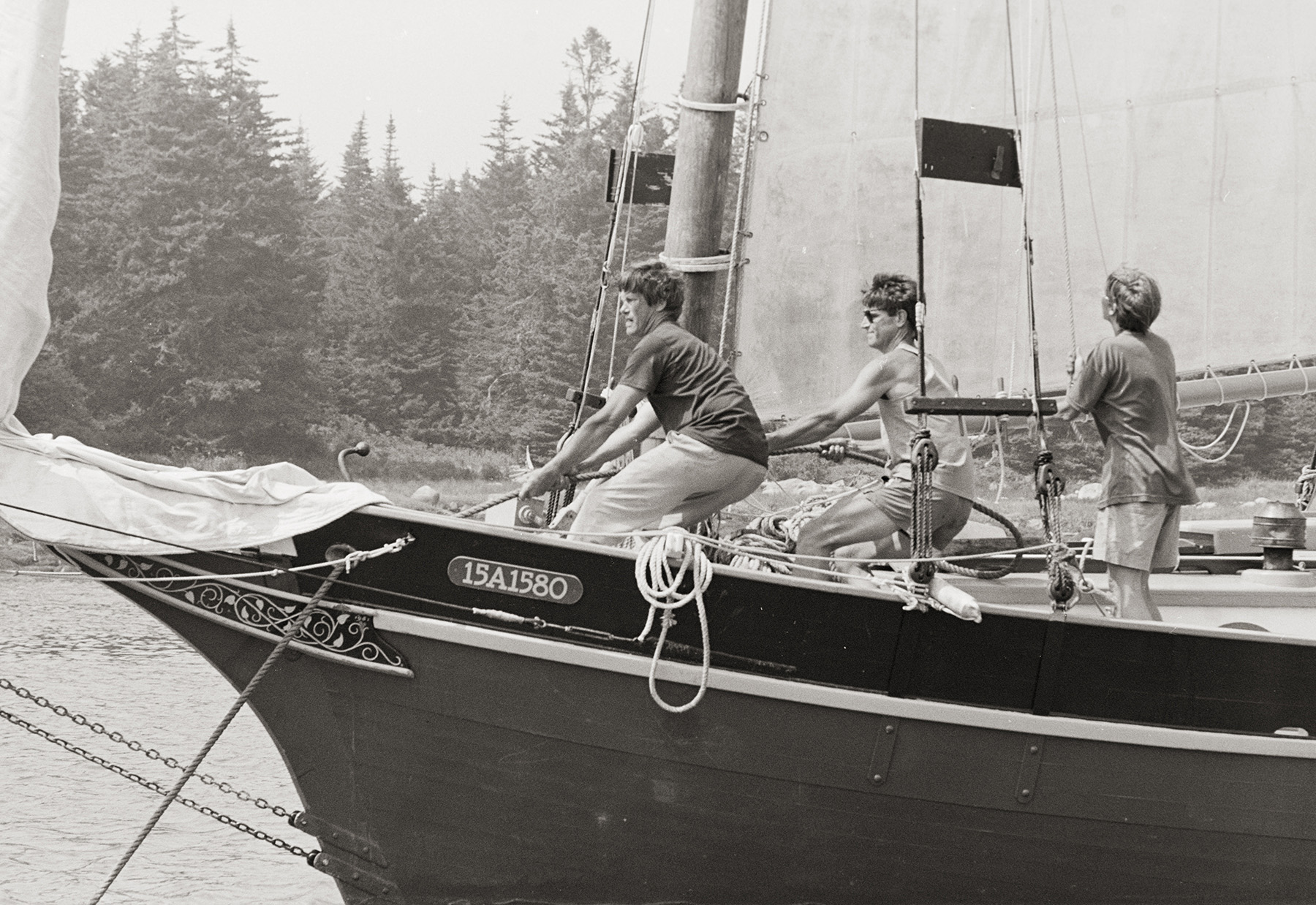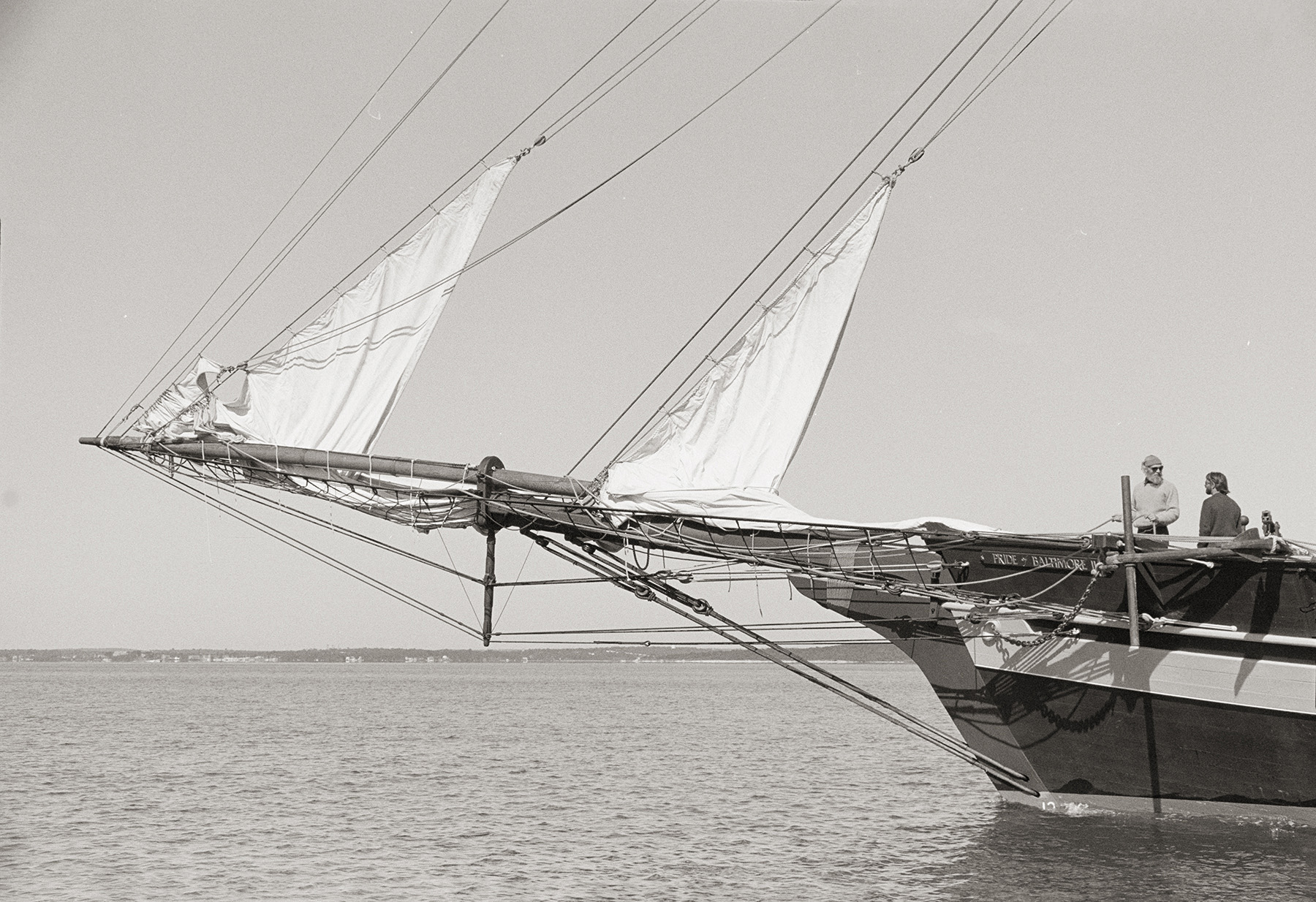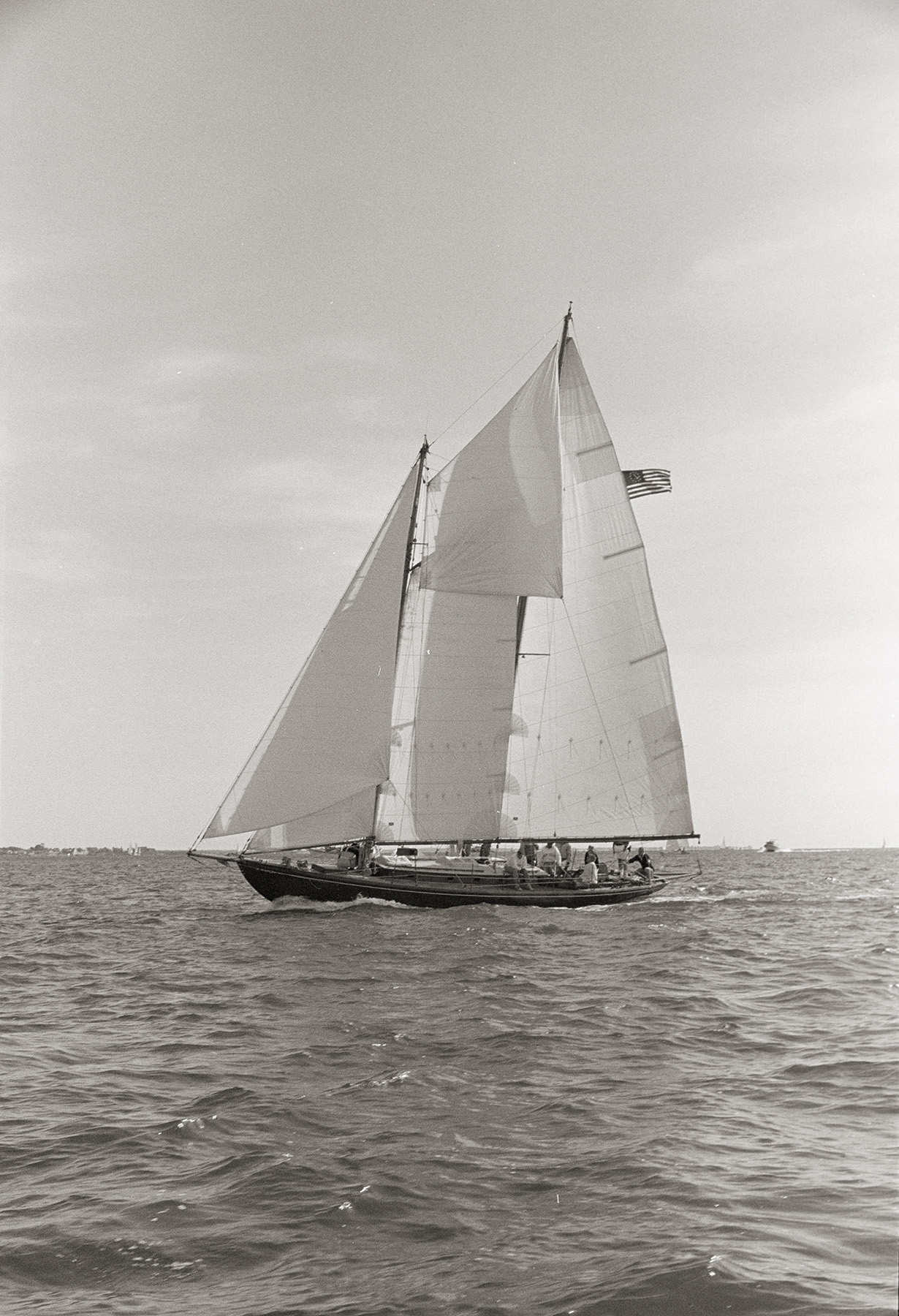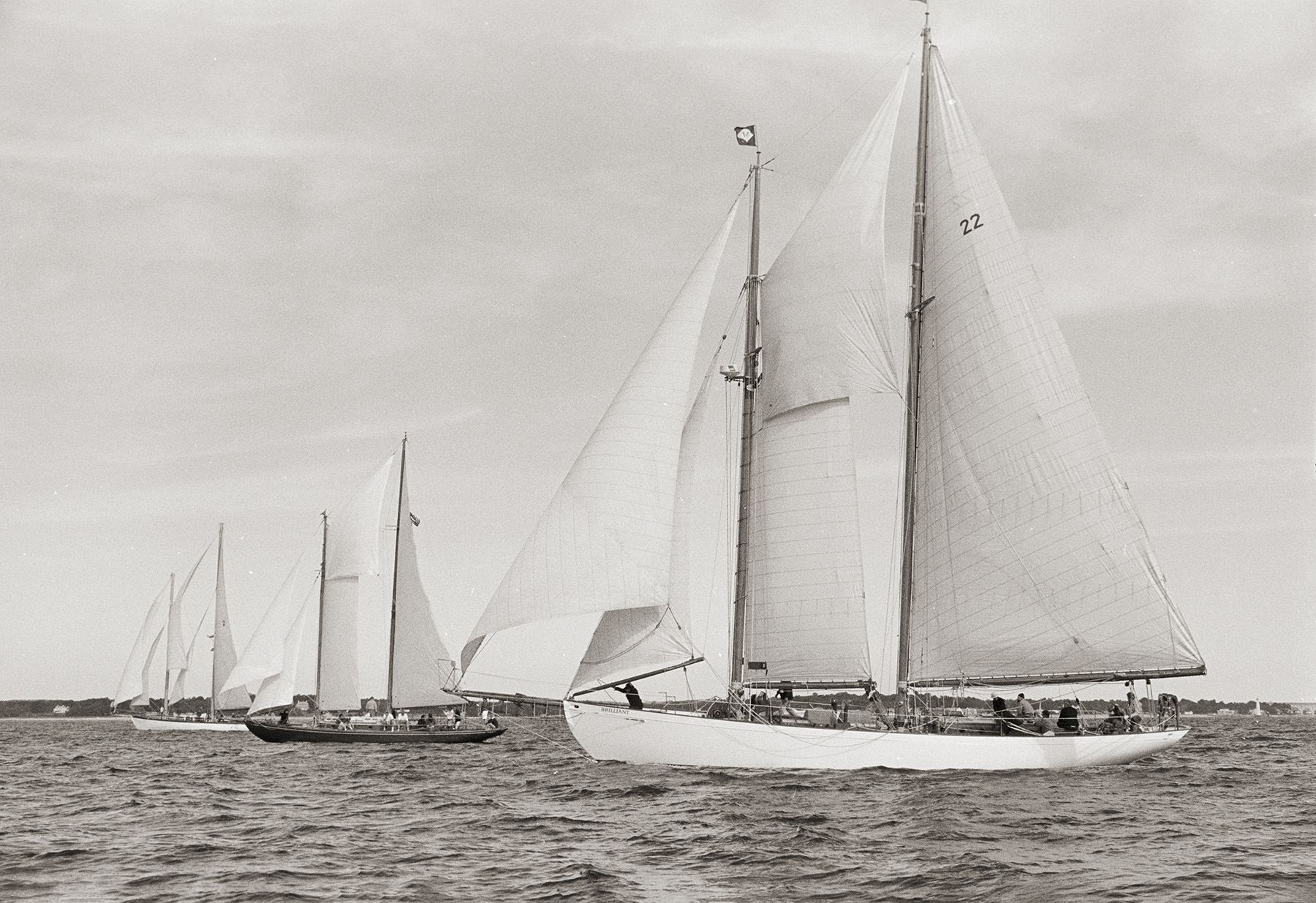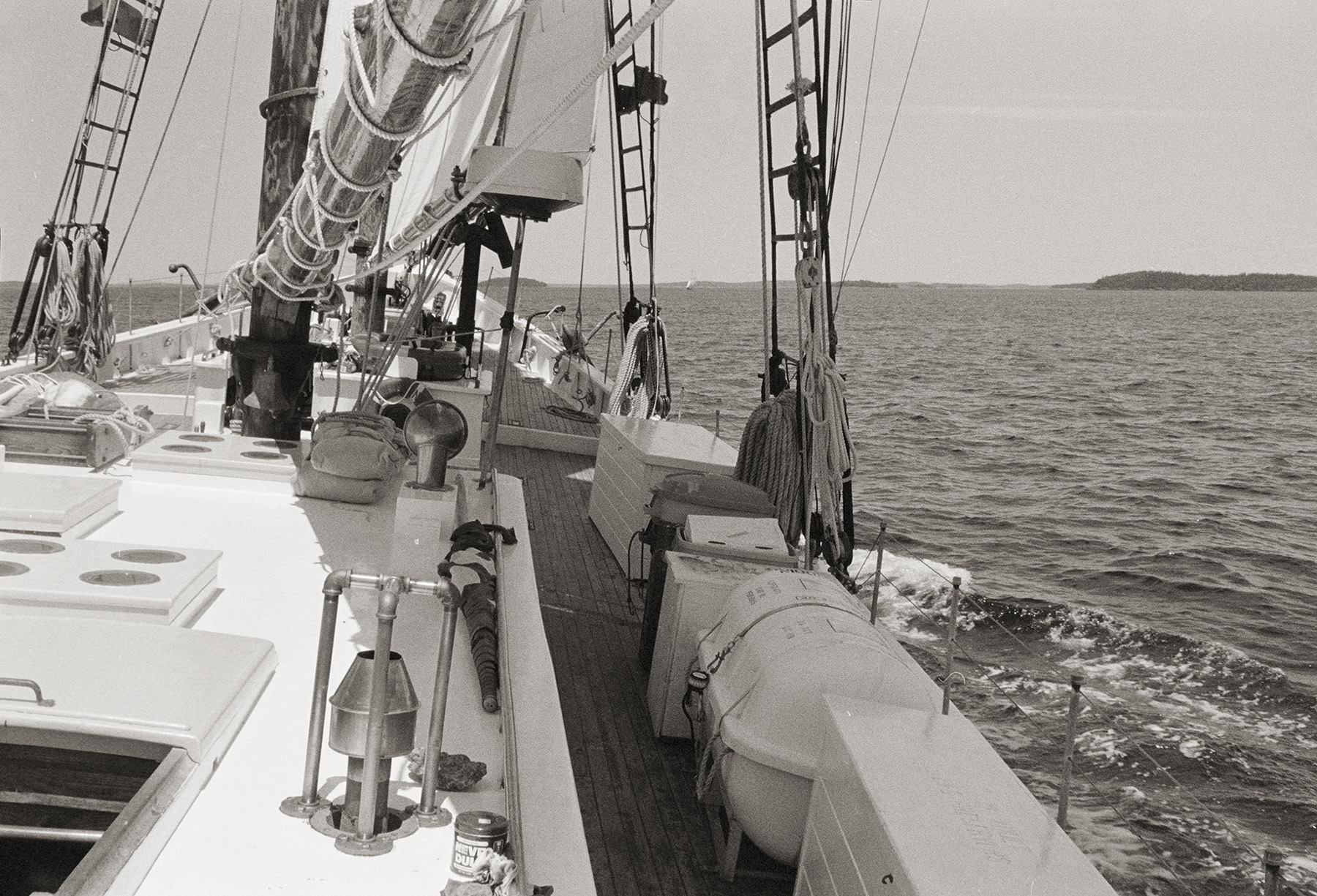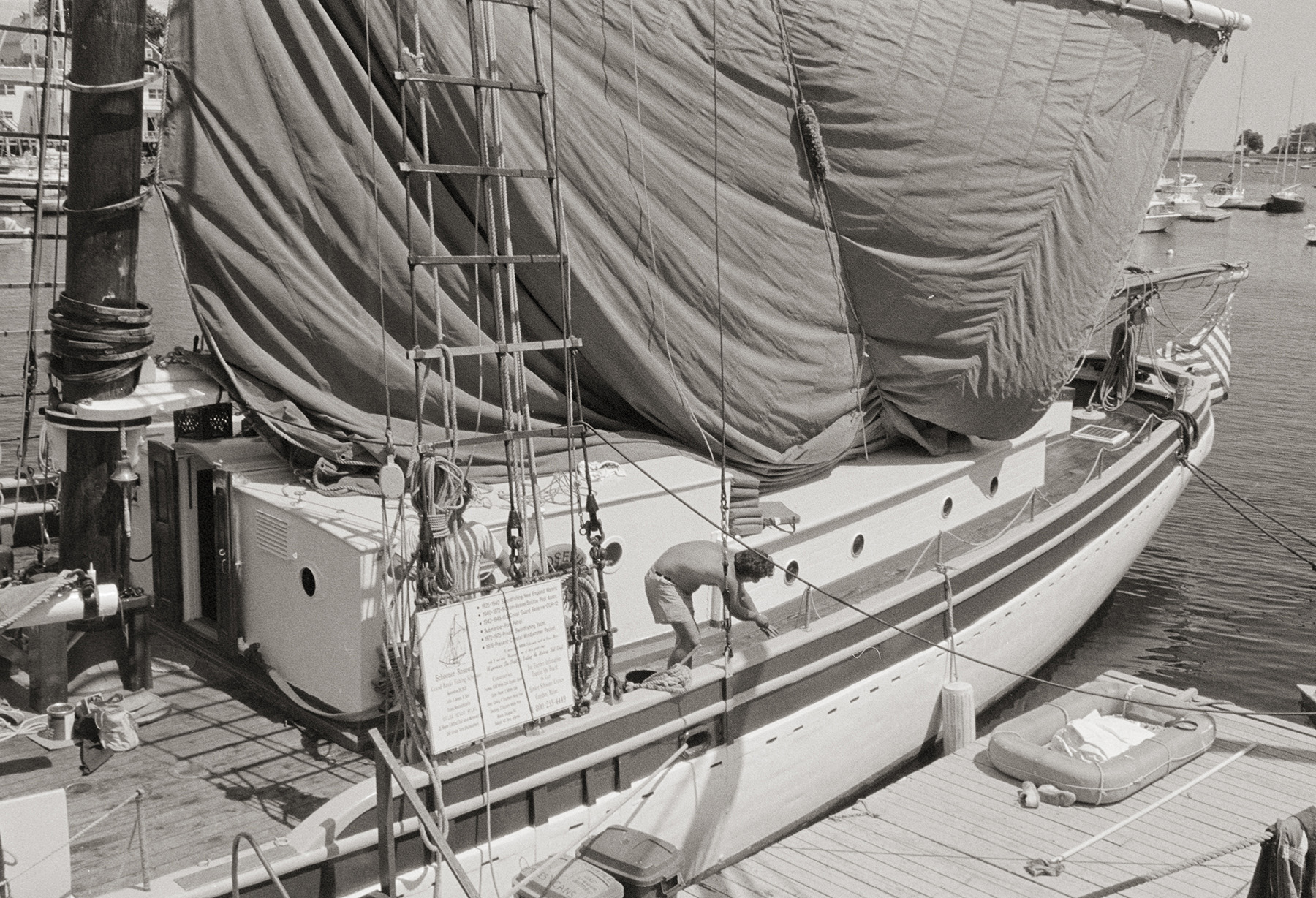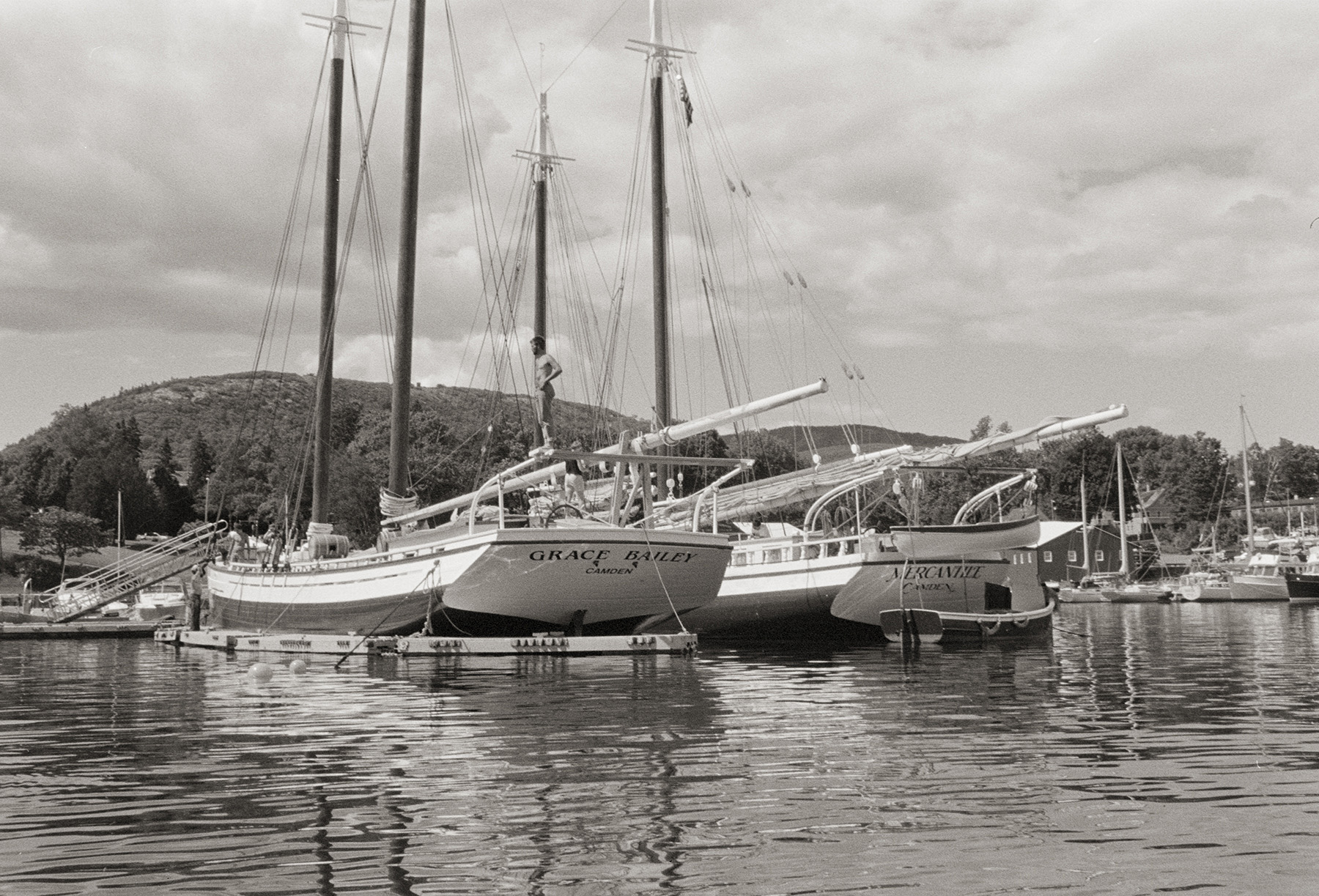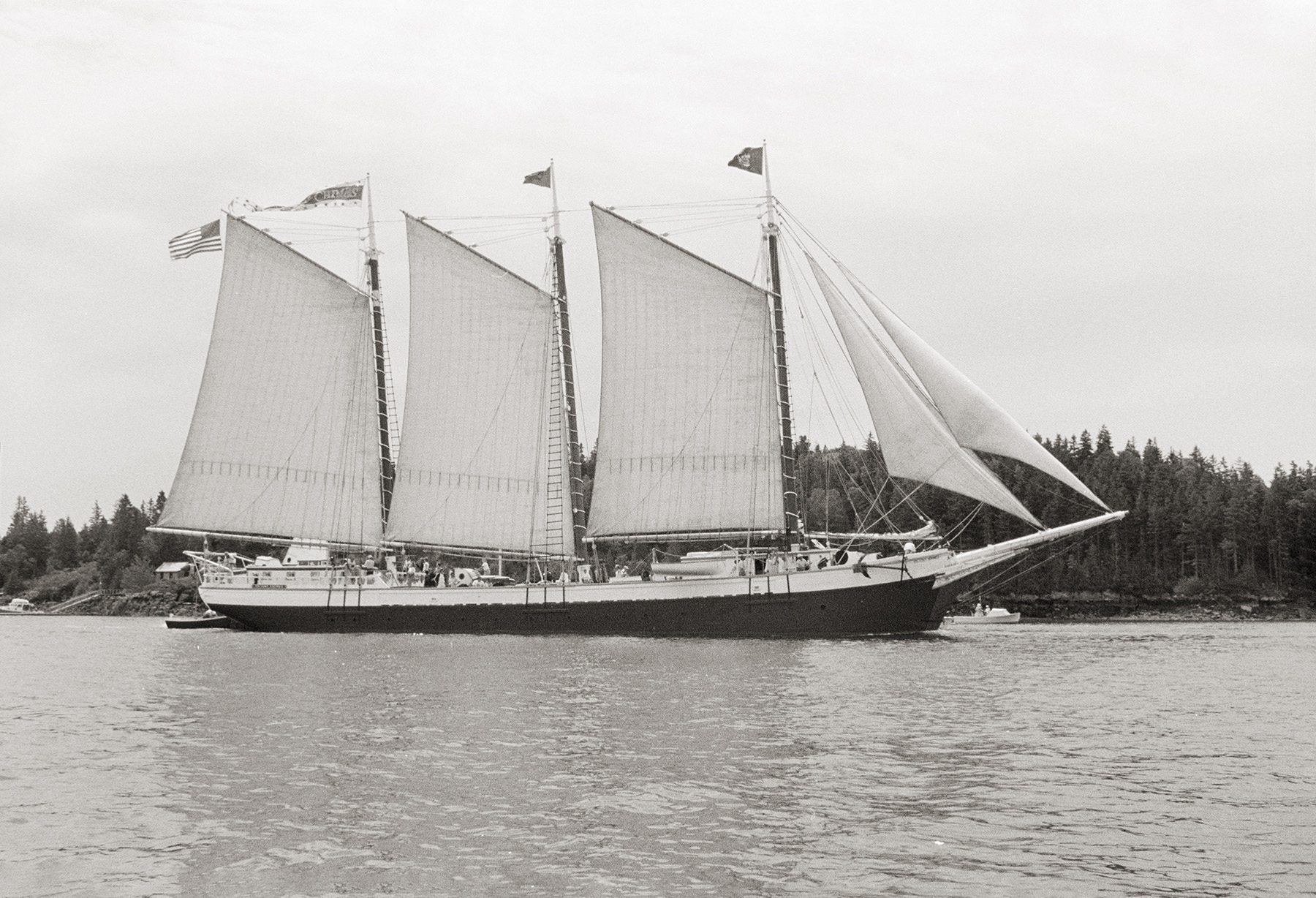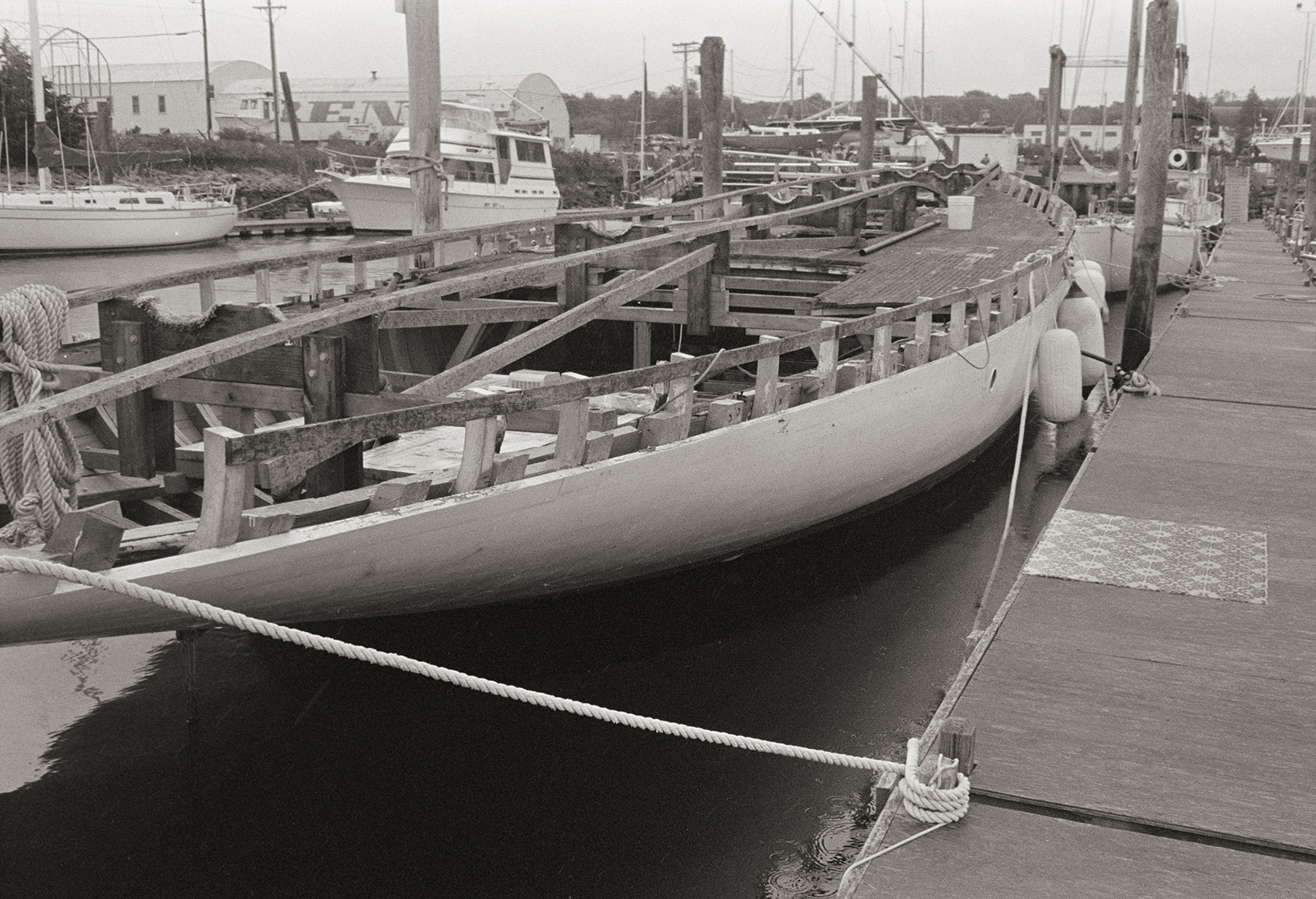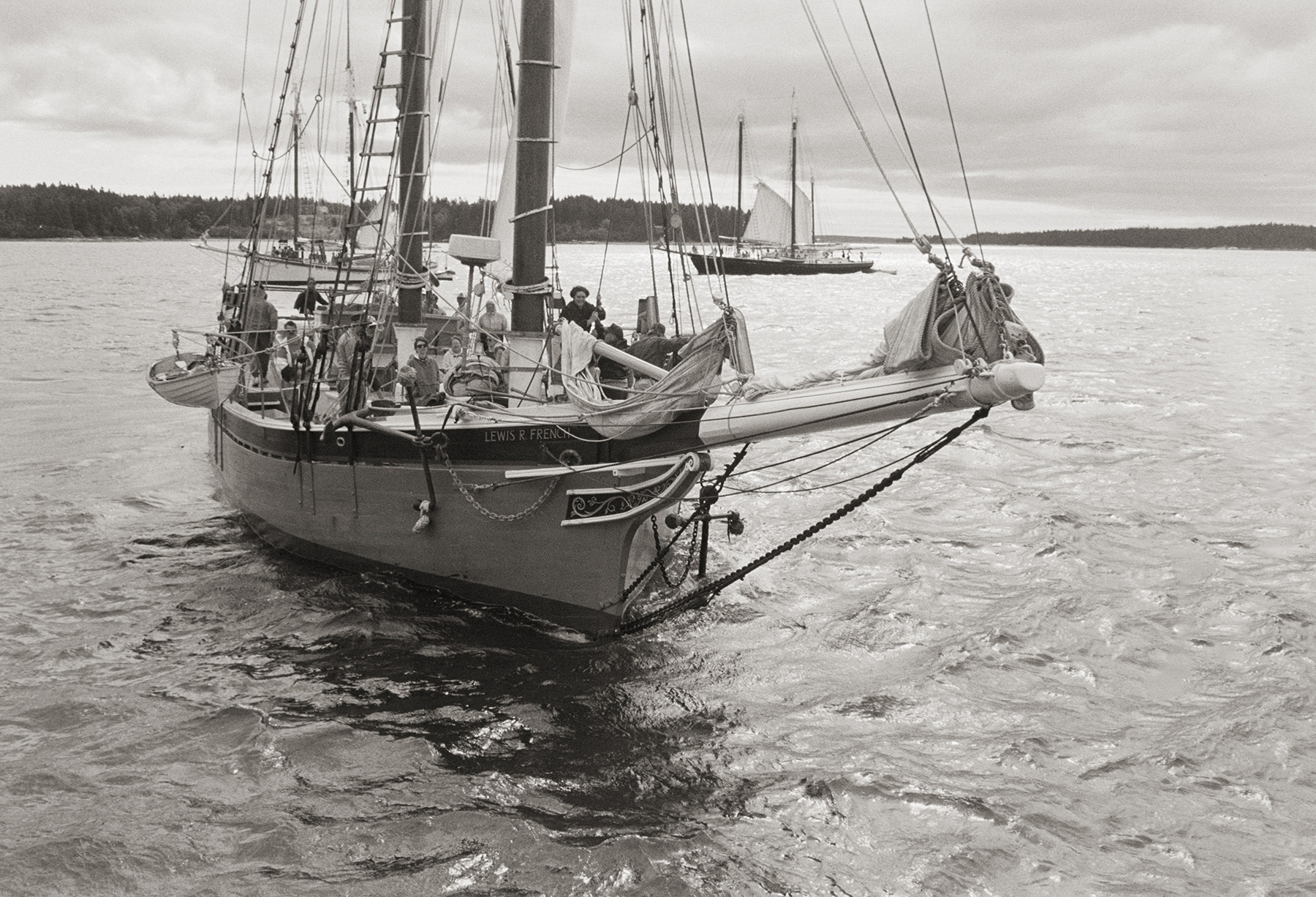Schooner Views
We missed a month blogging here, but as 2024 begins, there are still plenty of stories to tell with this group of photos, which cover a lot of ground (or water, more aptly).
In November, we mused a little about ketches and yawls, making a distinction for the layperson and pointing out the virtues of these “split rigs”. This month, we turn to the other split rig, much more familiar to the modern eye—the schooner.
Definitions first: Schooners carry fore-and-aft sails on two or more masts. For schooners having only two masts, the mainmast is taller than the foremast. Until a century ago, most have been gaff-rigged, making both foresail and mainsail quadrilateral, and supported by spars (mast, boom, and gaff) on three sides. Gaff-rigged sails allow more sail area for the same mast height compared to a three-sided Bermudian, aka Marconi, sail. But as schooner rigs evolved, schooner yachts tended to have gaff-rigged foresails and Marconi mainsails, or occasionally gaffs were shed altogether, and staysails occupied the space between the masts. Speed to windward was the primary incentive for these rig changes, and staysail schooners were notoriously fast.
Merchant schooners in the last decades of the Age of Sail stretched to hundreds of feet in hull length and carried three or more masts, maximizing speed and cargo capacity, and minimizing crew size. Two-masted schooners are today’s favorites among both sailors and non-sailors, partly because of their balanced silhouettes. The highest part of the hull is forward, and the tallest part of the rig is aft, which somehow connotes balance and stability.
The most common niche for the schooner in mid-coast Maine today is in the passenger trade where former fishing and cargo schooners (and a few purpose-built ones) offer summer cruises. There’s a nostalgic glamor about these vessels. Their proportions and the rustic nature of their accommodations contribute to their appeal. In the 1930s, Captain Frank Swift realized the potential for this when he began taking groups of young campers out on Penobscot Bay. His entrepreneurial brainchild gave rise to the windjammer fleets which are an iconic feature of the mid-coast region today.
Photographer Bray’s travels, close to home and far away, have acquainted him with diverse examples: elegant, veteran, modern, tiny, gargantuan, derelict, storied. His images give a terrific glimpse of the modern-day cache enjoyed by traditional designs among boat owners.
